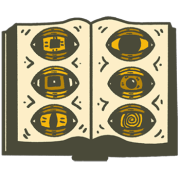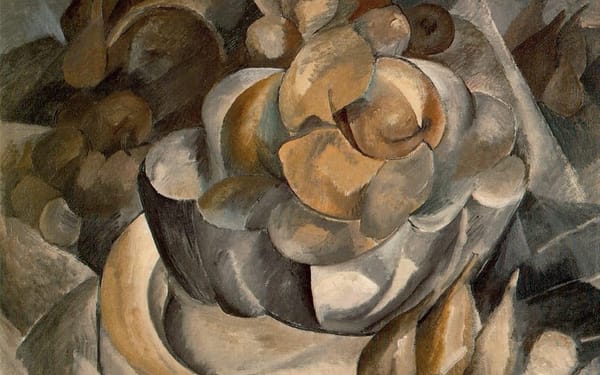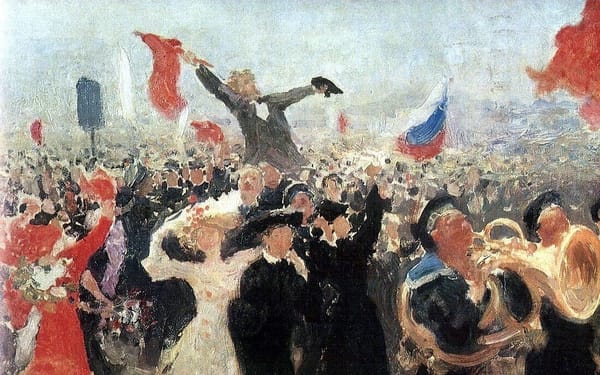Paper Roundup July 2025: 3I/ATLAS "fanfiction," arsenic life retraction, K2-18b
Every month, I publish a curated list of scholarship on "big questions" in science — the stuff you'd find sitting on the desk of an old timey natural philosopher whisked to the present.
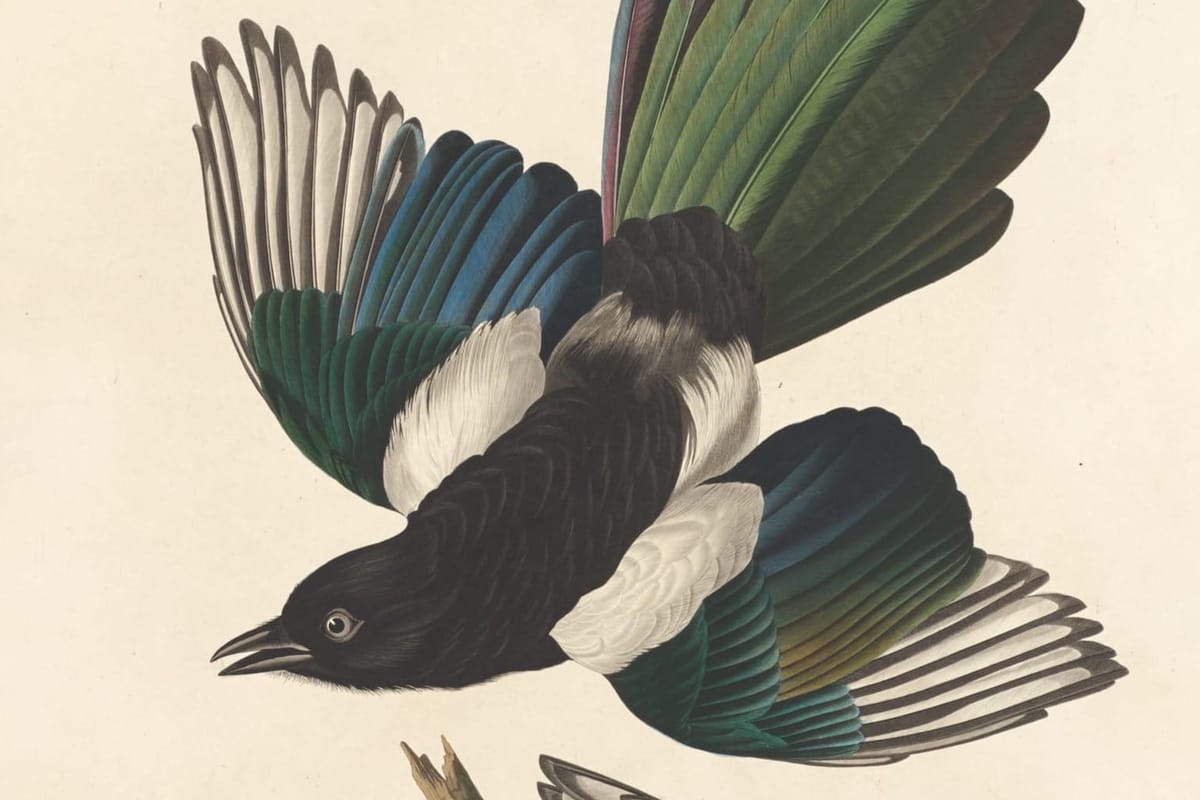
Every month, I collect interesting, fun, rage-inducing, or otherwise noteworthy papers in complexity, astrobiology, and origins. Inclusion is not endorsement. Weird suggestions, glaring omissions, and typos are 100% human error and 0% AI hallucination. Think something should be included in next month's newsletter? Shoot me an email at elise@reviewertoo.com.
If you found this paper roundup helpful, why not share it with a friend or post it on Bluesky or wherever else you hang out online? That's the best way to help this project continue!
Don't miss next month's newsletter!
Highlights
Astrobiology: "Comet fanfiction about aliens"
Is the Interstellar Object 3I/ATLAS Alien Technology? (July 22, arXiv preprint) by Adam Hibberd, Adam Crowl, and Abraham Loeb
For the third time, astronomers have spotted a visitor from beyond the solar system: interstellar comet 3I/ATLAS. Avi Loeb, a Harvard astrophysicist- turned-alien-hunter who thinks we should be devoting more energy and funding to searching for intelligent life than exoplanet biosignatures. Loeb has a bad reputation for making sensational claims and behaving unprofessionally with colleagues who disagree with him; he's effectively been ostracized from the astro community at this point. He also has a history of thinking objects like this might be interstellar alien spacecraft. So the jokes started flying basically as soon as 3I/ATLAS was announced, and only intensified after Loeb did indeed suggest that the interstellar interloper could be a spaceship in comments for a predictably sensational story in the British tabloid Daily Mail.
As of tonight's Arxiv I don't believe my colleague on the 2nd floor has yet published a claim that it's a spaceship.
— Jonathan McDowell (@planet4589.bsky.social) July 3, 2025 at 3:19 AM
Not long afterwards, Loeb and some colleagues posted a preprint about 3I/ATLAS maybe being a spaceship, which presents itself as a pedagogical exercise rather than a serious claim. Even so, local and national news stations and magazines picked up the story and ran with it, interviewing Loeb for TV and quoting him in articles. Joe Rogan straight up presented 3I/ATLAS as an ongoing alien invasion based on the preprint published on "arr-ex-I-vee, whatever that is" to his podcast audience of tens of millions. And then, to top it all off, the Daily Mail ran a story in response with the honestly hilarious headline: "Joe Rogan predicts 'the end of the Earth' as unidentified space object sets course for home planet."

Bluesky was not amused — or maybe actually very amused, because being angry is fun.
An excellent list of questions, although does not address why Avi Loeb always writes a comet fan-fiction about aliens.
— Elizabeth Tasker (@elizabethtasker.bsky.social) July 18, 2025 at 2:02 PM
[image or embed]
Journalists really need to stop asking Avi Loeb for his opinions, on any subject. Because astronomers should not have to spend even more time debunking him.
— Michael Busch (@michael-w-busch.bsky.social) July 3, 2025 at 6:48 PM
My ears are almost bleeding due to the tonal dissonance between Loeb's writings, which are more cautious than you might expect, and his public appearances which are absolutely not cautious. It's not exactly Loeb's fault that tabloids and Joe Rogan-types blow anything and everything to do with aliens out of proportion. But he does nothing to correct them, so it's hard not to shake the feeling that he's carelessly leaving a mess for other astronomers to clean up.
Scientists understandably get upset about this. And beyond frustration, they worry about cooky claims like this eroding public trust in science. On that front, I think they can probably mostly relax. Astrobiology is not epidemiology, and I'm skeptical that bombastic alien claims are as bad for public trust in science as astrobiologists seem to think they are; Bill Clinton went on TV to tell the world we'd probably found aliens in a Mars rock in 1996, and it was basically fine. NASA's science wing even got a funding boost while the rest of the agency was slimmed down.
Unpopular opinion incoming. I think there's arguably a place in science for people who make bombastic, almost-certainly-wrong claims that bedazzle the press and piss off colleagues — namely, on the outer fringes of fields like astrobiology in which the costs of failure are low and the rewards of discovery are potentially enormous. Setting Loeb himself aside, his core argument — that searching for signs of intelligent life could be a more productive way to find aliens in our lifetime than looking for gases in exoplanet atmospheres — is one I'm sympathetic to. That said, there certainly is a line between earnest nuttiness and snake oil salesmanship. But that's a topic for another day.

The Brain: Sleep is the price of breathing
Mitochondrial origins of the pressure to sleep (July 16, Nature) by Raffaele Sarnataro, Cecilia D. Velasco, Nicholas Monaco, Anissa Kempf and Gero Miesenböck
We spend a third of our lives unconscious — why? Sleep seems like something science should have explained by now. But while researchers know in pretty gruesome detail what happens if you don't sleep, they don't actually know why we need to do it. It's a big outstanding question, and this study may have finally helped resolve it. Based on gene expression experiments, Sarnataro and colleagues makes the case that animals made an evolutionary devil's bargain to evolve complex, energy-hungry nervous systems: breathing oxygen could provide the needed power, but in doing so an organism would slowly poison itself. Its mitochondria, eventually, would need to rest and repair themselves.
... sleep pressure and hunger both have mitochondrial origins, and that electrons flow through the respiratory chains of the respective feedback controllers like sand in the hourglass that determines when balance must be restored.
Evolving a brain capable of consciousness meant accepting the temporary death of that consciousness every night — something that gets a bit more horrifying the more you think about it, as neuroscientist Erik Hoel recently explored in a short science fiction story that might make it a bit harder to go to sleep tonight.
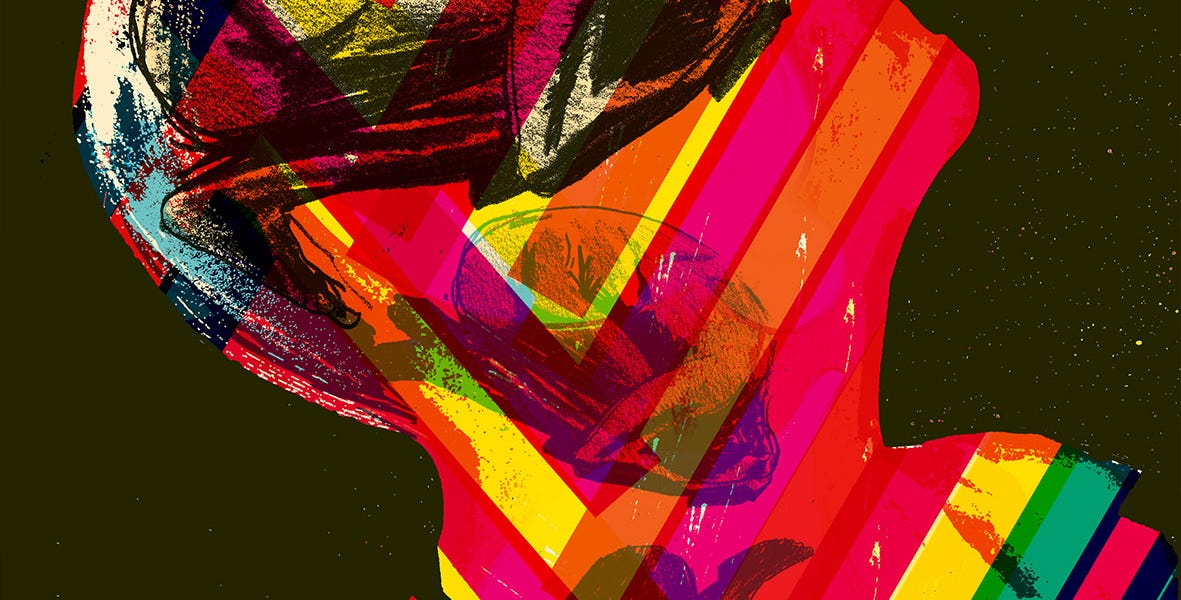
Astrobiology: "Prebiotic" was always a bad name for interesting carbon chemistry, and now this opinion is citable
Rethinking "Prebiotic Chemistry" (July 11, Perspectives of Earth and Space Scientists) by Michael L. Wong, Madeline Christensen, and Stuart Bartlett
As of this writing, determining the factors that contribute to the emergence of life remains one of the greatest enduring scientific mysteries (Cleaves, 2012). In other words, we actually do not know what prebiotic chemistry is, nor what is important for it, since there is no fully fleshed-out pathway or theory behind life's emergence (Bartlett & Wong, 2023).
Wong and Bartlett are great at coining new terms that draw important distinctions astrobiologists, in general, are very bad at drawing. Genesity, lyfe, and now protobiotic processes are all very helpful terms that would cut through a lot of confusion if adopted more broadly. People should use them.
Cosmology: Is time emergent?
Kinematic Flow and the Emergence of Time (July 18, Physical Review Letters) by Nima Arkani-Hamed, Daniel Baumann, Aaron Hillman, Austin Joyce, Hayden Lee, and Guilherme L. Pimentel
The idea that time could be emergent isn't new; you can find hints of it going back to Ludwig Boltzmann's work on the 2nd law of thermodynamics, and Ilya Prigogine had quite a lot to say about this in his book The End of Certainty. Here, the authors present a toy model of cosmological evolution that doesn't have time baked in, but nonetheless manifests something that they argue could be reasonably interpret as time evolution.
I can't pretend I understood this paper on a short skim, but hopefully some of you got it better and can help clear things up in the comments.
Origins of Life: "Arsenic life" paper retracted after 15 years
Retraction (July 24, Science) by H. Holden Thorp
The infamous "arsenic life" paper claiming the discovery of a microbe that can grow on arsenic instead of phosphorus has been retracted by Science. This paper is a classic controversy in astrobiology — it came up in just about every geobiology or astrobiology course I took back in the 2010s. The context for this retraction is unusual, to say the least. Usually, papers retracted for reasons other than misconduct (i.e., for being wrong) are retracted with the permission of at least some of the authors. That didn't happen here. In fact, the authors dispute the retraction and all but 1 of the living authors co-penned a response to the retraction.
Whatever you think about the arsenic life paper, this case clearly raises some interesting questions about what should warrant retraction. Is an idea being wrong enough? Does it need to be both wrong and famous, like the arsenic life paper? I don't pretend to have an intelligent answer. Bluesky's reactions seem like an even split between gleeful Schadenfreude, cautious approval, and concern. I found the most interesting contribution to be this thread by former Science Editor in Chief Jeremy Berg explaining why he didn't retract the paper when he was in charge years ago despite having concerns about it:
Why I didn't retract this paper when I was Editor-in-Chief at Science (THREAD 🧵)
— Jeremy Berg (@jeremymberg.bsky.social) July 27, 2025 at 1:48 PM
[image or embed]
Artificial Life: A SFI paper on scaling laws in cells
Scaling in Cells (July 10, Preprints.org preprint) by Jose Ignacio Arroyo, Jordan Okie, Daniel Muratore, Christopher Kempes, and Geoffrey West
A little review of scaling laws in cells and a call for general theories in cell biology based on first principles out of the SFI, seemingly aimed at the artificial life community. The last author, Geoffrey West, is famous for having contributed to metabolic scaling theory, which ironically I'm not sure would count as a theory under the definition put forth in this article. I enjoyed his book Scale, which shoes just how deep the rabbit hole can go when you start asking why things are the size (or duration, or whatever other magnitude) they are.
Emergence: The "Mother of All Processes"
Way More Than the Sum of Their Parts: From Statistical to Structural Mixtures (July 10, arXiv preprint) by James P. Crutchfield
I didn't have time to read this closely, but I wanted to highlight it because Crutchfield's concept of an "epsilon machine" has been picked up by other researchers interested in developing theories of emergence. Notably it was important for Fernando Rosas et al.'s "Software in the Natural World" idea, which was covered for Quanta by Philip Ball.

Astrobiology: Last episode on the K2-18b show...
A spectroscopist’s view of the evolving story of exoplanet K2-18 b (July 17, Nature Reviews Physics) by Jonathan Tennyson and Sergei N. Yurchenko
K2-18b is a sub-Neptune exoplanet in the habitable zone of a dim red star, and it's the star of a raging biosignature detection claim drama. For several years now, Nikku Madhusahan, an astronomer at Cambridge has been building up the idea that certain sub-Neptune planets could be hospitable water worlds — what he calls Hycean planets — instead of dead balls of gas. He thinks K2-18b is such a planet. Basically every exoplanet astronomer or astrobiologist I've ever spoken to about this disagrees on that point. They disagree even more vehemently with Madhusahan's more recent claim of a strong detection of dimethyl sulfide — a gas that's considered a biosignature even though, as I reported for Science, is present on dead comets. For context, usually I have to email about three times as many scientists as I need to speak to for a magazine article because people don't respond; for an article on the K2-18b biosignature for National Geographic, all 10 scientists I contacted responded within 1 day. Because they had thoughts.
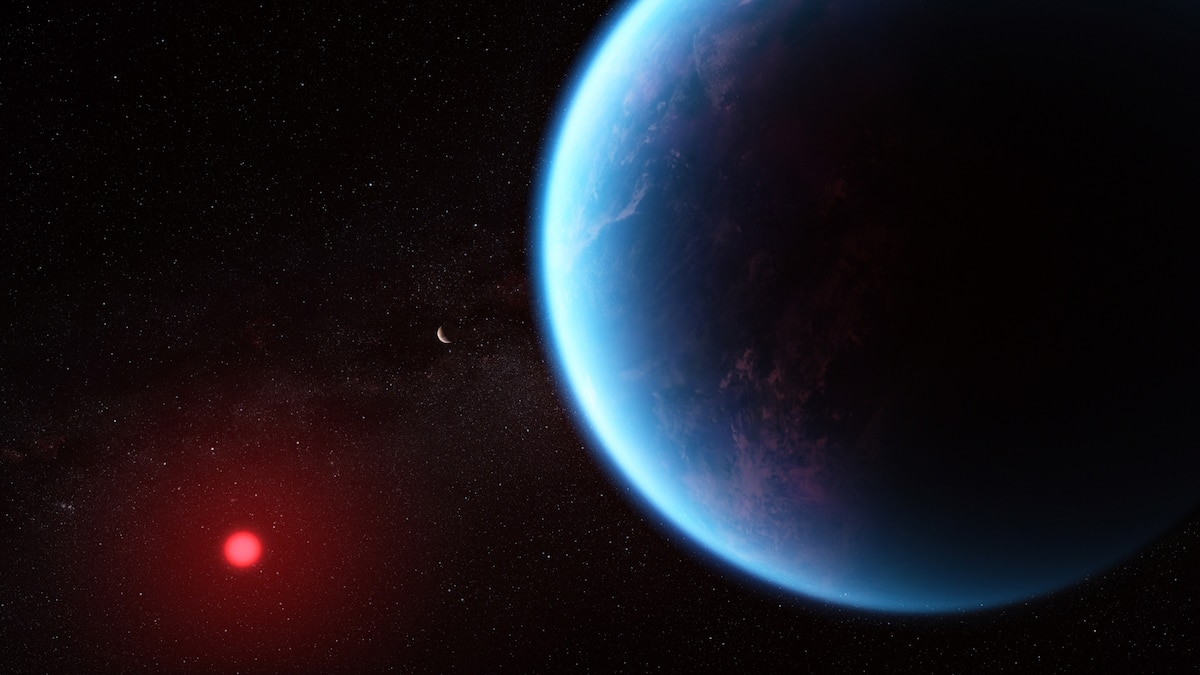
The authors of this short, sweet analysis succinctly summarize the state of the K2-18b controversy. But they do more. They astutely point out that the ongoing controversy highlights a serious and often unspoken limitation baked into the way that astronomers analyze and report the compositions of exoplanet atmospheres: statistical significance means nothing outside the context of your causal model. We can only find what we're looking for, and we're looking for pretty simple explanations for pretty complicated objects.
The original detection of water in K2-18 b, which we now know is not there, was reported with a significance of 3.6σ (ref. 1) and 3.93σ (ref. 2). In medical research it is no longer acceptable to ascribe significance to a statistical correlation without some underlying causal relationship. Similarly for exoplanets, chemical models should be linked to assumptions used to interpret observations
Free Will: Objections to the Luck Objection
Chance, Choice, and Control: Free Will in an Indeterministic Universe (July 25, philarchive preprint) by Henry D. Potter and Kevin Mitchell.
Kevin Mitchell and his colleagues have been publishing some interesting things about free will that almost have me convinced that I am not, in fact, a meat robot. This is a philosophy-focused companion paper to a previous, more physics-focused preprint that argues the future is undetermined and open to being changed by our choices in the present. I'm interested in what physicists make of the argument.
Don't miss the next paper roundup! Subscribe to R2 to stay on top of the biggest ideas in astrobiology, origins of life, and complexity science.
The Rest
Exoplanet Astrobiology
- The Single Beacon: Progresses in Understanding Earth as an Exoplanet Using DSCOVR/EPIC Observations (July 19, Frontiers in Remote Sensing) by Xun Jian, Lixiang Gu, Siteng Fan, Stuart Bartlett, Jiani Yang, Jonathan Jiang, Yangcheng Luo, and Yuk L Yung
- Wavelength Requirements for Life Detection via Reflected Light Spectroscopy of Rocky Exoplanets (July 19, arXiv preprint, under review at Astrobiology) by Joshua Krissansen-Totton, Anna Grace Ulses, Maxwell Frissell, Samantha Gilbert-Janizek, Amber Young, Jacob Lustig-Yaeger, Tyler Robinson, Stephanie Olson, Eleonora Alei, Giada Arney, Celeste Hagee, Chester Harman, Natalie Hinkel, Emilie Lafleche, Natasha Latouf, Avi Mandell, Mark M. Moussa, Niki Parenteau, Sukrit Ranjan, Blair Russell, Edward W. Schwieterman, Clara Sousa-Silva, Armen Tokadjian, and Nicholas Wogan
- A water-rich interior in the temperate sub-Neptune K2-18 b revealed by JWST (July 16, arXiv preprint) by Renyu Hu, Aaron Bello-Arufe, Armen Tokadjian, Jeehyun Yang, Mario Damiano, Pierre-Alexis Roy, Louis-Philippe Coulombe, Nikku Madhusudhan, Savvas Constantinou, and Björn Benneke
- Detailed Architecture of the L 98-59 System and Confirmation of a Fifth Planet in the Habitable Zone (July 12, arXiv preprint) by Charles Cadieux, Alexandrine L'Heureux, Caroline Piaulet-Ghorayeb, René Doyon, Étienne Artigau, Neil J. Cook, Louis-Philippe Coulombe, Pierre-Alexis Roy, David Lafrenière, Pierrot Lamontagne, Michael Radica, Björn Benneke, Eva-Maria Ahrer, Drew Weisserman, and Ryan Cloutieron
- Detecting alien living worlds and photosynthetic life using imaging polarimetry with the HWO coronagraph (July 4, arXiv preprint) by Svetlana Berdyugina, Lucas Patty, Jonathan Grone, Brice Demory, Kim Bott, Vincent Kofman, Giulia Roccetti, Kenneth Goodis Gordon, Frans Snik, Theodora Karalidi, Victor Trees, Daphne Stam, Mary N. Parenteau
- Detecting Surface Liquid Water on Exoplanets (July 3, arXiv preprint) by Nicolas B. Cowan, Jacob Lustig-Yaeger, Renyu Hu, Laura C. Mayorga, and Tyler D. Robinson
Search for Life and SETI
- Exploring molecular assembly as a biosignature using mass spectrometry and machine learning (July 25, arXiv peprint) by Lindsay A. Rutter, Abhishek Sharma, Ian Seet, David Obeh Alobo, An Goto, and Leroy Cronin
- Why do we need (another) universal tracers portal in Astrobiology? (July 24, International Journal of Astrobiology) by Lena Noack, Inge Loes ten Kate, Emmanuelle J. Javaux, Sean McMahon, Christophe Malaterre, John Lee Grenfell, Fabian Klenner, Yannick J. Lara, Nozair Khawaja, C. H. Lucas Patty, Vinciane Debaille, Mickael Baqué, Jon Hillier, and Frank Postberg
- Science drama alert: This appears to be a response to the new Life Detection Knowledge Base Project, outlined in a paper below.
- Heat inactivation of proteins: implications for the Mars Sample Campaign and other extraterrestrial sample return missions (July 24, International Journal of Astrobiology) by Dorota Tokmina-Roszyk, Chandani Singh, Fei Chen, Mark Anderson, Nicholas Heinz, Bill Warner, Martell Winters, Brent Shelley, Helin Raagel, Alvin L. Smith, Brian Clement, Matthew Jorgensen, Ilyas Yildirim, Janelle Lauer, and Gregg B. Fields
- From Extraterrestrial Microbes to Alien Intelligence: Rebalancing Astronomical Research Priorities (July 23, arXiv preprint) by Omer Eldadi, Gershon Tenenbaum, and Abraham Loeb
- A Search for Life in the Universe Advances Life on Earth (July 21, Earth arXiv preprint) by Catherine Fontana, Sabrina Elkassas, Tristan Caro, Srishti Kashyap, and Alta Howells
- Introduction to the Life Detection Knowledge Base Project (July 17, Astrobiology) by Tori M. Hoehler, Alfonso Davila, Niki Parenteau, Richard Quinn, David Des Marais, Svetlana Shkolyar, Leslie Bebout, Steven Benner, Jennifer G. Blank, William Brinckerhoff, Morgan Cable, Sherry Cady, Jennifer Eigenbrode, Richard Everroad, Stephanie Getty, Daniel Glavin, Stanislaw Gliniewicz, Heather Graham, Lindsay Hays, Linda Jahnke, Barbara Lafuente, Graham Lau, Owen Lehmer, Jon Lima-Zaloumis, Kennda Lynch, Ashley Murphy, Marc Neveu, Scott M. Perl, J. Hank Rainwater, Antonio Ricco, Andro Rios, Sanjoy Som, Mary Beth Wilhelm, and Andrew Pohorille
- Note: This month's edition of Astrobiology is dedicated to the new Life Detection Knowledge Base project, and if you're interested in it there are several relevant articles. I've included only the introduction.
- A proposed mechanism for the formation of protocell-like structures on Titan (July 10, International Journal of Astrobiology) by Christian Mayer and Conor A. Nixon
Origins and Artificial Life
- Escherichia coli with a 57-codon genetic code (July 31, Science) by Wesley E. Robertson, Fabian B. H. Rehm, Martin Spinck, Raffael L. Schumann, Rongzhen Tian, Wei Liu, Yangqi Gu, Askar A. Kleefeldt, Cicely F. Day, Kim C. Liu, Yonka Christova, Jérôme F. Zürcher, Franz L. Böge, Jakob Birnbaum, Linda van Bijsterveldt, and Jason W. Chin
- ATP synthesis driven by atmospheric hydrogen concentrations (July 24, PNAS) by Sarah Soom, Stefan Urs Moning, Gregory M. Cook, James P. Lingford, Ashleigh Kropp, Sieu Tran, Rhys Grinter, Chris Greening, and Christoph von Ballmoos
- The unreasonable likelihood of being: origin of life, terraforming, and AI (July 24, arXiv preprint) by Robert G. Endres
- Interfacial effects determine nonequilibrium phase behaviors in chemically driven fluids (July 23, PNAS) by Yongick Cho and William M. Jacobs
- Light-fuelled growth dynamics and structural transition of synthetic protocells (July 22, Nature Synthesis) by Ke Shi, Peiyong Song, Jianwei Li, Yan Qiao and Yiyang Lin
- On the Transitional Character and Regularity of Planetary Abiogenesis (July 21 Cambridge Open Engage preprint) by Serge Dolgikh
- An enzyme-based approach for highly efficient self-replication of DNA origami dimers (July 17, PNAS) by Lei Zhang, Ruojie Sha, and Paul Chaikin
Physics and Foundations of Complexity
- Improving noisy free-energy measurements by adding more noise (July 31, Physical Review E) by Stephen Whitelam
- Bootstrapping the Quantum Hall Problem (July 31, Physical Review X) by Qiang Gao, Ryan A. Lanzetta, Patrick Ledwith, Jie Wang, and Eslam Khalaf
- Ideal gas law for a quantum particle (July 29, Physical Review E) by Alejandro M. F. Rivas, Eduardo G. Vergini, Leonardo Ermann, and Gabriel G. Carlo
- Evolutionary Benefits of Fitness-Dependent Mutation Rates (July 24, Physical Review Letters) by Andrew G. T. Pyo, Qiwei Yu, Julia Merkenschlager, and Ned S. Wingreen
- Control of spatiotemporal chaos by stochastic resetting (July 24, Physical Review E) by Camille Aron and Manas Kulkarni
- Memory-induced long-range order in dynamical systems (July 23, Physical Review E) by Chesson Sipling, Yuan-Hang Zhang, and Massimiliano Di Ventra
- Genuine quantum scars in many-body spin systems (July 21, Nature Communications) by Andrea Pizzi, Long-Hei Kwan, Bertrand Evrard, Ceren B. Dag and Johannes Knolle
- Life Finds A Way: Emergence of Cooperative Structures in Adaptive Threshold Networks (July 17, arXiv preprint) by Sean P. Maley, Carlos Gershenson, Stuart A. Kauffman
- Effective One-Dimensional Reduction of Multicompartment Complex Systems Dynamics (July 15, Physical Review X) by Giorgio Vittorio Visco, Johannes Nauta, Tomas Scagliarini, Oriol Artime, and Manlio De Domenico
- Disentangling Boltzmann brains, the time-asymmetry of memory, the H theorem, and the second law (July 15, arXiv preprint) by David Wolpert, Carlo Rovelli, and Jordan Scharnhorst
- Consensus, Inconsistency, Emergence: what’s paraconsistency got to do with it? (July 14, arXiv preprint) by Gabriel Rocha
Biological Complexity and Self-Organization
- Adaptive Node Positioning in Biological Transport Networks (July 30, Physical Review Letters) by Albert Alonso, Lars Erik J. Skjegstad, and Julius B. Kirkegaard
- Capillary interactions drive the self-organization of bacterial colonies (July 28, Nature Physics) by Matthew E. Black, Chenyi Fei, Ricard Alert, Ned S. Wingreen and Joshua W. Shaevitz
- On Considering Unoccupied Sites in Ecological Models (July 27, Entropy) by Ricardo Concilio, Luiz H. A. Monteiro
- Predicting the direction of phenotypic difference (July 26, Nature Communications) by David Gokhman, Keith D. Harris, Shai Carmi and Gili Greenbaum
- Where Physics Meets Behavior in Animal Groups (July 24, PRX Life) by Chantal Nguyen and Orit Peleg
- Resource-use plasticity governs the causal relationship between traits and community structure in model microbial communities (July 18, PNAS) by Brendon McGuinness, Stephanie C. Weber, and Frederic Guichard
Networks and Graphs
- Phase transition in the susceptible-infected model on hypernetworks (July 28, Physical Review E) by Gadi Fibich and Guy Rothmann
- Breakdown of stochastic resonance in complex networks (July 21, Physical Review E) by Jonah E. Friederich, Everton S. Medeiros, Sabine H. L. Klapp, and Anna Zakharova
- Continuous time random walks on networks (July 16, Physical Review E) by Sarvesh K. Upadhyay and R. K. Singh
- River networks in the framework of complex network theory (July 9, Physical Review E) by Antonio Sanchirico and Mauro Fiorentino
- Dynamical cavity method for hypergraphs and its application to quenches in the 𝑘−XOR−SAT problem (July 8, Physical Review E) by Aude Maier, Freya Behrens, and Lenka Zdeborová
The Brain
- A neural manifold view of the brain (July 28, Nature Neuroscience) by Matthew G. Perich, Devika Narain and Juan A. Gallego
- Traveling waves link human visual and frontal cortex during working memory–guided behavior (July 23, PNAS) by Canhuang Luo and Edward F. Ester
- Hippocampal representations drift in stable multisensory environments (July 23, Nature) by Jason R. Climer, Heydar Davoudi, Jun Young Oh and Daniel A. Dombeck
- Top-down and bottom-up neuroscience: overcoming the clash of research cultures (July 21, Nature Reviews Neuroscience) by Fernando E. Rosas, Andrea I. Luppi, Pedro A. M. Mediano, Morten L. Kringelbach, Luiz Pessoa and Federico Turkheimer
- Biological detail and graph structure in network neuroscience (July 21, arXiv preprint) by David Papo and Javier M. Buldú
- Norms emerge through iterated learning (July 18, PNAS) by Scott Partington, Rachana Kamtekar, Shaun Nichols
- Synchronization of visual perception within the human fovea (July 16, Nature Neuroscience) by Annalisa Bucci, Marc Büttner, Niklas Domdei, Federica B. Rosselli, Matej Znidaric, Julian Bartram, Tobias Gänswein, Roland Diggelmann, Martina De Gennaro, Cameron S. Cowan, Wolf Harmening, Andreas Hierlemann, Botond Roska and Felix Franke
- Predictive processes shape individual musical preferences (July 15, PNAS) by Ernest Mas-Herrero and Josep Marco-Pallarés
- Double dissociation of dynamic and static face perception provides causal evidence for a third visual pathway (July 15, Nature Communications) by A. T. Prabhakar, Anupama Roy, Kavitha Margabandhu, Allison M. McKendrick, Olivia Carter and Marta I. Garrido
- Amplification through local critical behavior in the mammalian cochlea (July 14, PNAS) by Rodrigo G. Alonso, Francesco Gianoli, Brian Fabella and A. J. Hudspeth
- Role of gap junctions and clustered connectivity in emergent synchronization patterns of inhibitory neuronal networks (July 14, Physical Review E) by Hélène Todd, Mathieu Desroches, Alex Cayco-Gajic, Boris Gutkin
- Decoding dialogue is a matter of time (July 7, Nature Neuroscience research highlight of this paper) by Henrietta Howells
Neural Networks, Collective Computing, and AI
- Approximately Symmetric Neural Networks for Quantum Spin Liquids (July 29, Physical Review E) by Dominik S. Kufel, Jack Kemp, DinhDuy Vu, Simon M. Linsel, Chris R. Laumann, and Norman Y. Yao
- Causally-Informed Instance-Wise Feature Selection for Explaining Visual Classifiers (July 29, Entropy) by Li Tan
- Explosive neural networks via higher-order interactions in curved statistical manifolds (July 24, Nature Communications) by Miguel Aguilera, Pablo A. Morales, Fernando E. Rosas and Hideaki Shimazaki
- Spin-glass model of in-context learning (July 23, Physical Review E) by Yuhao Li, Ruoran Bai, and Haiping Huang
- Neuromorphic Computing: A Theoretical Framework for Time, Space, and Energy Scaling (July 23, arXiv preprint) by James B Aimone
- Neural Networks and Markov Categories (July 18, AppliedMath) by Sebastian Pardo-Guerra, Johnny Jingze Li, Kalyan Basu, and Gabriel A. Silva
- A collective intelligence model for swarm robotics applications (July 17, Nature Communications) by Alessandro Nitti, Marco D. de Tullio, Ivan Federico and Giuseppe Carbone
- Emergence of Functionally Differentiated Structures via Mutual Information Optimization in Recurrent Neural Networks (July 17, arXiv preprint) by Yuki Tomoda, Ichiro Tsuda, and Yutaka Yamaguti
- Decoding nature’s grammar with DNA language models (July 14, PNAS commentary) by Peter L. Morrell and Serguei V. Pakhomov
- Do large language models have a theory of mind? (July 3, PNAS) by Damian K. F. Pang, Severin K. Y. Pang, Marianne D. Broeker, and Alix Hibble
Just for Fun
- Fossil cricket songs: Reliable reconstruction of cricket song from biophysical models and preserved specimens (July 30, Royal Society Open Science) by Ryan Weiner, Sarah Duke, Gabriella Simonelli, Nathan W. Bailey and Natasha Mhatre
- Virtual disease triggers real immune response: Neural anticipation of virtual infection triggers an immune response (July 28, Nature Neuroscience) by Sara Trabanelli, Michel Akselrod, Julia Fellrath, Giulia Vanoni, Tommaso Bertoni, Silvia Serino, Georgia Papadopoulou, Maren Born, Matteo Girondini, Giuseppe Ercolano, Giulia Ellena, Anthony Cornu, Giulio Mastria, Hector Gallart-Ayala, Julijana Ivanisevic, Petr Grivaz, Maria Paola Paladino, Camilla Jandus and Andrea Serino
- Raven middle child syndrome: Rearing group size in young ravens: stress load or social opportunity? (July 23, Royal Society Open Science) by Palmyre H. Boucherie , Gloria Murari , Elisabeth A. Svitil and Thomas Bugnyar
- Not hair, not feathers, but some weird third thing: Triassic diapsid shows early diversification of skin appendages in reptiles (July 23, Nature) by Stephan N. F. Spiekman, Christian Foth, Valentina Rossi, Cristina Gascó Martín, Tiffany S. Slater, Orla G. Bath Enright, Kathleen N. Dollman, Giovanni Serafini, Dieter Seegis, Léa Grauvogel-Stamm, Maria E. McNamara, Hans-Dieter Sues and Rainer R. Schoch
- It wasn't just COVID: Infectious disease outbreaks drive political mistrust July 17, PNAS) by Ore Koren and Nils B. Weidmann
- Second languages are harder to break: Dynamic neuroplasticity of language networks: The intersection of bilingualism and epilepsy (July 14, PNAS) by Alena Stasenko, Erik Kaestner, Adam J. Schadler, Anny Reyes, Clare Urbanic, Jonathan L. Helm, Daniel Saldana, Giselle Carollo-Duprey, Monika Połczyńska, Christopher Benjamin, Leigh N. Sepeta, Tamar H. Gollan, Lucia Cavanagh, and Carrie R. McDonald
Thanks for reading! It's thanks to patrons like you that I can continue writing R2. You can help even more by sharing this post with a friend, leaving a comment, or dropping a tip in my tip jar.


